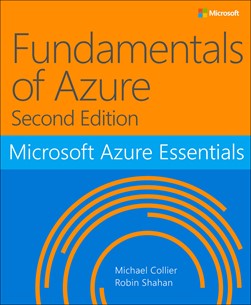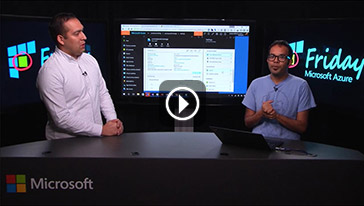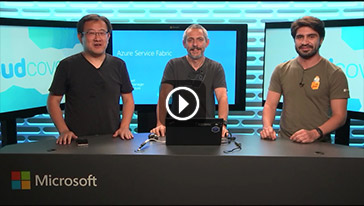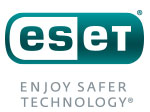| | | October 2016 |  |
| |  |
| |
VoodooShield is a patented toggling desktop shield gadget and computer lock that automatically locks the computer when it’s at risk and unlocks when it isn’t. VoodooShield uses Azure Machine Learning to find new and unknown (zero day) malware undetectable by traditional anti-virus methods. The VoodooAi engine consists of three Machine Learning models and algorithms that analyze approximately 40 features to determine a file’s maliciousness. These models are 98.6 to 99.4 percent accurate, with 98.8 to 99.4 percent precision, and a recall of 99.5 to 99.8 percent.

| |
| |
This free Microsoft Press e-book covers the Azure fundamentals you need to start developing solutions right away. Discover the Azure features you’re most likely to need. Download the e-book.

| |
| |
At Microsoft Ignite, Adobe and Microsoft announced plans for a strategic partnership to help enterprise companies embrace digital transformation and deliver compelling, personalized experiences through every phase of their customer relationships. With this partnership, Adobe will make Azure its preferred cloud platform for the Adobe Marketing Cloud, Adobe Creative Cloud, and Adobe Document Cloud. Azure provides Adobe with a trusted, global cloud and a powerful data platform for intelligent services, including comprehensive machine learning and cognitive capabilities in Microsoft Cortana Intelligence Suite and SQL Server. Watch this CNNMoney interview with Microsoft CEO Satya Nadella and Adobe CEO Shantanu Narayen.
| |
| | Upcoming Events | DevOps Enterprise Summit
November 7, 2016
San Francisco, California
QCon
November 7, 2016
San Francisco, California
Joomla! World Conference 2016
November 11, 2016
Vancouver, Canada
Connect(); // 2016
November 16, 2016
Online event
Gartner Data Center, Infrastructure & Operations Management Summit
November 28, 2016
London, United Kingdom
Microsoft Developer Camps
events.msdn.microsoft.com |
| Careers | | | | Bring your vision to ours and help shape the future of the cloud. |
| |
|
| |
Azure Security Center helps customers take control of cloud security policies, monitor the current security of Azure resources, and detect and respond to active attacks. Updates for Azure Security Center include: integrated vulnerability assessment, expanded web application firewall (WAF) capabilities, Azure Storage security assessment (coming soon), new detections, security incidents, and threat intelligence reports.
| |
| |
Azure Active Directory (Azure AD) provides secure single sign-on to thousands of SaaS apps. Through Application Proxy, Azure AD can provide secure remote access to on-premises web applications that follow specific standards. Microsoft and Ping Identity will offer a version of PingAccess for Azure AD that will extend the ability of Application Proxy to provide secure remote access to more on-premises web applications. A preview of the service will be available in early 2017. Watch a video that describes the partnership.
| |
| |
Azure Key Vault is introducing Key Vault Certificates to simplify tasks related to SSL/TLS certificates from supported third-party CAs. This enhancement helps customers enroll for and automatically renew certificates, while providing auditing trails within the same environment.
| |
| |
Microsoft Operations Management Suite now offers four new integrated services for a complete Azure-based management solution: Insights & Analytics, Automation & Control, Security & Compliance, and Protection & Recovery.
| |
| |
With Update Management, Microsoft Operations Management Suite helps customers keep IT systems updated without any unplanned application downtime. Customers can get time estimates and optimized sequences of updates for their Windows Server and Linux systems to improve application availability and their service-level agreement (SLA). They can integrate System Center Configuration Manager, Windows Server Update Services, and third-party systems for orchestrated update runs from the cloud.
| |
| |
Available for use in all Azure public regions, Azure DNS lets customers host their Domain Name System (DNS) domains in Azure and manage DNS records using the same credentials, APIs, tools, billing, and support as their other Azure services. Azure DNS also incorporates enterprise-grade security features in Azure Resource Manager for two-factor authentication, role-based access control, and detailed audit logs. Azure DNS uses a global network of name servers for extremely high performance and availability, now backed by a 99.99 percent availability service-level agreement (SLA).
| |
| |
Virtual network peering for Azure Virtual Network lets customers directly link virtual machines in two virtual networks in the same region through private IP addresses, as if they were part of the same network. Virtual network peering routes packets through the internal Azure backbone network—without any gateway in the path. This allows for a low-latency, high-bandwidth connection between virtual machines in different virtual networks.
| |
| |
The web application firewall (WAF) in Azure Application Gateway protects web applications from common web-based attacks like SQL injection, cross-site scripting attacks, and session hijacks. It comes preconfigured with protection from threats identified by the Open Web Application Security Project (OWASP) as the top 10 common vulnerabilities. Simple to deploy, the firewall provides logging to continuously monitor web applications against exploits. Customers can run WAF in both protection and detection-only modes. This public preview feature is being offered as part of the WAF tier.
| |
| |
HTTP/2 improves user experience by increasing webpage loading speed and performance. This feature is now enabled by default at no additional cost for all customers using Azure Content Delivery Network from Akamai. The HTTP/2 edge server implementation is fully compliant with the HTTP/2 standard RFC 7540. (All HTTP/2 features are supported with the exception of server push.) Main HTTP/2 features include multiplexing, header compression, and stream prioritization.
| |
| |
The Ultra Performance tier connects a virtual network to an Azure ExpressRoute circuit. This tier provides five times more network throughput than the High Performance gateway. Customers can now deploy more network-intensive workloads into their virtual networks.
| |
| |
Customers now expect the performance of their virtual machines to match that of the physical box they can buy themselves. Accelerated Networking for Windows virtual machines on Azure offers up to 25 Gbps networking speeds. Customers can achieve near-native performance on Windows virtual machines in the cloud, likely surpassing typical on-premises performance in terms of the speed and consistency that their applications require. Accelerated Networking is available in public preview for select virtual machine types and regions at no extra charge.
| |
| |
At launch, the H-Series for Azure Virtual Machines will be among the fastest virtual machines available in the public cloud in terms of performance per core (ACU benchmark). Depending on application and scenario offering, it gets as much as a 30 to 50 percent performance increase compared to other virtual machines. For more H-Series benchmarks, visit the “Sizes for virtual machines in Azure” webpages for Windows and Linux. For CoreMark and SPECint results, visit the Compute benchmark scores for Windows VMs and Compute benchmark scores for Linux VMs webpages.
| |
| |
It’s time to look beyond the IPv4 protocol. Many new mobile networks and new technologies, such as the Internet of Things (IoT), depend on the nearly unlimited address capacity offered by IPv6. Now Azure-hosted services offer Azure IPv6-load-balanced, dual-stack (IPv4+IPv6) Internet connectivity for Azure Virtual Machines. Native IPv6 connectivity (TCP, UDP, HTTP(S)) all the way to the virtual machine enables a broad range of service architectures. IPv6 for Virtual Machines is available now in most Azure regions. Read more on the Azure Blog.
| |
| |
Azure Disk Encryption for Linux IaaS virtual machines and support for virtual machines with Premium storage is generally available in all Azure public regions. With this announcement, Azure Disk Encryption for Windows and Linux Standard IaaS virtual machines is now generally available to enable so customers can protect and safeguard the operating system disk and data disks at rest using industry-standard encryption technology. It’s integrated with Azure Key Vault to help customers manage the disk encryption keys and secrets in their Key Vault subscription.
| |
| |
Azure Service Fabric for Windows Server is a standalone runtime that lets customers create their own Service Fabric cluster on any set of Windows Server 2012 R2 or 2016 hosts, whether on premises or in any cloud. This free download is now generally available with optional support provided through the purchase of an Azure support plan.
| |
| |
Azure Service Fabric now adds Linux as a choice of host operating system for Service Fabric cluster hosts. Linux hosts enable both Java and .NET applications running on Service Fabric. This capability is available in public preview alongside the already generally available choice of Windows Server. Read more on the Azure Blog.
| |
| |
Temporal Tables let customers track the full history of data changes in Azure SQL Database without custom coding. Customers can focus data analysis on a specific point in time and use a declarative cleanup policy to control retention of historical data. Designed to improve productivity when customers develop applications, Temporal Tables can help support data auditing in applications, analyze trends or detect anomalies over time, implement slowly changing dimension patterns, and perform fine-grained row repairs in cases of accidental data errors made by humans or applications.
| |
| |
A major update to Azure SQL Database Advisor greatly reduces the time required to produce and implement index-tuning recommendations. Now customers can run their production workload in SQL Database for a day, and Advisor will offer relevant tuning recommendations to improve performance (and apply them when customers have enabled automated tuning).
| |
| |
Azure Storage announces the general availability of Storage Service Encryption for Azure Blob storage (Block and Page Blobs) with any new Storage account created through Azure Resource Manager. Accounts enabled with this feature will have data encrypted with Microsoft-managed keys using the industry-leading 256-bit Advanced Encryption Standard (AES-256) algorithm. Microsoft performs key management and rotation, and offers compliance with key standards.
| |
| |
Azure Premium Storage is a solid-state drive (SSD)-based storage solution designed to support I/O-intensive workloads. With Premium Storage, you can add up to 64 TB of persistent storage per virtual machine, with more than 80,000 I/O Operations Per Second (IOPS) per virtual machine, and extremely low latencies for read operations. Offering a service-level agreement (SLA) for 99.9 percent availability, Premium Storage is now available in the North Central US region, as well as other regions previously announced.
| |
| |
In March 2015, Azure App Service became generally available with the goal of making it easier for web developers to do cool things in the cloud. In addition to a great experience for .NET developers, it also supports PHP, Node.js, Java, and Python stacks as well as a number of open source web products. A new public preview introduces native Linux support for Node.js and PHP stacks.
| |
| |
Customers will now be able to deploy Azure Logic Apps from Visual Studio in their production environment. This feature lets them leverage both designer and code views right from Visual Studio. Customers can also manage source control and don’t have to use production tools to build out Logic Apps. Logic Apps enterprise integration tools for Visual Studio 2015 also provide a schema editor, flatfile schema generator, and XSLT mapper to easily create Integration Account artifacts from Visual Studio.
| |
| |
Customers can now automatically deliver streaming data in their event hubs into an Azure Blob storage account, with the ability to specify a time or size interval. Setting up Archive is quick. It adds no administrative costs and it scales automatically with Azure Event Hubs throughput units. Event Hubs Archive lets customers focus on data processing rather than data capture. They can load data into Azure Data Lake, Azure Data Factory, and Azure HDInsight to perform batch processing and other analytics.
| |
| |
Hosted on Azure, the Customer Stories website brings together all the rich customer stories from across Microsoft, and around the world, in one visually engaging website. Features include a redesigned look and feel, improved tagging with state-of-the-art search capabilities, and high performance for the site, allowing speedy search and quick access to stories. These stories regularly appear in the Be Inspired section in our newsletter, so check out this month’s feature.
| |
|
| |
Azure Friday’s Seth Juarez learns about new Azure Redis Cache administration options that allow you to test your application for connection resiliency in case of a failure and schedule updates to Azure Redis Cache. Watch now.

| |
| |
Whether you're already cloud-savvy or are just getting started, you'll learn new techniques and best practices directly from top Microsoft engineers who build and run cloud services across Azure, Office 365, and Windows 10. Choose from over 70 technical sessions across Azure and the hybrid platform including security, networking, data, storage, identity, mobile, cloud infrastructure, management, DevOps, app platform, and more. Reserve your seat today for one of the first ten cities.
| |
| |
A small squad of Microsoft IT professionals has done for Gears of War 4 what Delta Squad did for humanity. No, they didn’t fight off swarms of subterranean reptilian hominids, but in their quiet, geeky way, they totally saved the day. Read more on IT Showcase.

| |
| |
Watch this on-demand edX course and apply what you already know about implementing solutions on Azure to learn solution design skills. A team of expert instructors will teach you to identify tradeoffs and make decisions for designing public and hybrid cloud solutions. This course also helps prepare you for Microsoft Certification Exam 70-534: Architecting Microsoft Azure Solutions.
| |
| |
In part 1, learn about different service types, programming models, tools, and services provided by Azure Service Fabric to help developers build cloud-scale applications. Get answers to questions about capacity plan, Cloud Service migration, state management, and overall application lifecycle management. In parts 2 and 3, we'll drill into two interesting topics: container integration and Linux support.

You may also be interested in the episode on Azure App Service best practices for large-scale applications.
| |
| |
Prepping for Certification Exam 70-398? Watch this course for accelerated exam prep presented by Microsoft senior mobility consultants who work with Enterprise Mobility + Security technology every day. Step through the exam modules, work with sample questions, and learn to design for cloud/hybrid identity, device access and protection, remote access, and more.
| |
|
| |  | | |
The Port Authority of New South Wales is an Australian state-owned corporation responsible for commercial maritime operations across multiple ports on the country’s east coast. Following partial privatization and subsequent port mergers, the Port Authority decided to migrate its disaster recovery and development environments to the Azure platform, taking advantage of Microsoft Operations Management Suite for backup and site recovery.
Learn more
| |
|
|
| |  | | | Advanced threat prevention security for Azure | |
| |
Migrating to the Azure cloud shouldn’t be a security challenge. Check Point’s vSEC cloud security and unified management provides comprehensive firewalling and industry-leading threat prevention security in the Azure cloud. vSEC protects all your Azure cloud assets from cyber threats, zero-day exploits, and malware. Try it free for 30 days.
Visit Marketplace page
| |
|
| |  | | |
New mandates for large international banks—including Basel III, RWA, FRTB, Dodd-Frank, and others—are fast approaching. TIBCO DataSynapse GridServer customers can dynamically allocate resources in Azure based on the urgency of calculation tasks, allowing it to manage grid overload, service-level agreements (SLAs), and many other factors.
Visit Marketplace page
| |
|
| |  | | |
ESET Remote Administrator 6 Virtual Machine for Azure provides single console management of ESET security solutions in the cloud. ESET Remote Administrator is the single-pane-of-glass console designed to manage ESET’s broad portfolio of security solutions for desktops, servers, and mobile devices. Equipped with an interactive dashboard, it provides optimized user experiences for organizations of all sizes.
Visit Marketplace page
| |
|
| |  | | |
Looking for enterprise-class business continuity and disaster recovery for Azure? Zerto, a pioneer in the field of IT resilience, provides award-winning software for continuous availability and disaster recovery. Zerto customers realize recovery point objectives of seconds and recovery time objectives of minutes, along with enterprise-class orchestration capabilities, stellar performance, and rock-solid compliance reporting. Watch the webinar.
Visit Marketplace page
| |
|
|
| | Hello!
One of my favorite things about Microsoft is the diversity of expertise and variety of new projects. (And with so many new releases and announcements, it’s hard not to make the newsletter so long every month!) Did you know that Microsoft employs people who have experience in biology and medical research? Check out this article about how people here are using technology, including Azure, to figure out how to ‘solve’ cancer.
By the way, I used to work at Adobe—it’s great to see our new partnership announced at Ignite!
Miwa | |
|
|